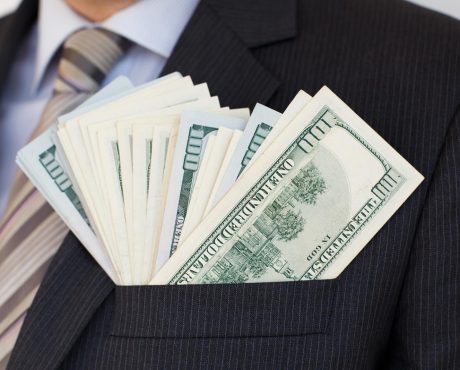EPR Stock Is Offering a Big Yield
Unless you’ve been living under a rock, you’ve probably heard that stocks have been falling. The three major indices of the U.S. stock market have plunged over the past few weeks, and even with a surprise interest rate cut from the U.S. Federal Reserve, sentiment did not really change.
It seems that everything is now in the doldrums.
But there is one thing that might make this market sell-off an opportunity for income investors: the inverse relationship between dividend yield and stock price.
You see, a company’s dividend yield is calculated by dividing its annualized per-share cash payout by its share price. Therefore, if a company’s stock tumbles but it manages to maintain its payout, its yield goes up.
That’s basically what’s happening with EPR Properties (NYSE:EPR) at the moment. Headquartered in Kansas City, Missouri, EPR is a real estate investment trust (REIT) whose shares have been hit particularly hard by the latest market sell-off.
And yet, during this period of market downturn, the company has managed to not only maintain its payout, but actually raise it. On February 24, EPR’s board of directors declared a monthly cash dividend of $0.3825 per share, a two percent increase from the company’s prior monthly dividend rate. The new dividend will be paid on April 15 to shareholders of record as of March 31. (Source: “EPR Properties Reports Fourth Quarter and 2019 Year-End Results,” EPR Properties, February 24, 2020.)
That’s right; this is a monthly dividend stock. So instead of waiting three months for a check like most dividend investors (because most dividend stocks follow a quarterly distribution schedule), investors of EPR Properties stock can get paid every single month.
Combining a dividend hike with a massive tumble in stock price, EPR’s yield has shot up. Trading around $28.00 per share at the time of this writing, the company offers an annual dividend yield of about 16%.
EPR Properties Is Running a Unique Business
Other than for its staggering yield, EPR stands out due to its unique real estate strategy. The company invests in two main types of properties: “Experiential” and “Education.”
Experiential is currently EPR’s biggest segment, accounting for 89% of the company’s total investments. Properties in this segment include theaters, ski resorts, experiential lodging, “eat & play” properties, and other attractions. The key is that, rather than selling a physical product, these properties are designed to provide people with experiences, which could allow the REIT to prosper even during the “retail apocalypse.” (Source: “Investor Presentation Fourth Quarter & Year End 2019,” EPR Properties, last accessed March 16, 2020.)
The remaining 11% of EPR’s portfolio is made up of Education properties, which include early childhood education centers and private schools.
The portfolio is well diversified geographically. As of December 31, 2019, EPR Properties’ portfolio consisted of 370 locations in 44 U.S. states and in Canada. They were leased to more than 200 tenants.
Business has been going quite well at the REIT. At the end of 2019, EPR’s experiential portfolio was 99.1% leased and its Education portfolio was 100% leased. (Source: EPR Properties, February 24, 2020, op. cit.)
Like most REITs, EPR reports something called adjusted funds from operations (AFFO), which is a metric that can provide an insight into a REIT’s dividend safety.
According to the company’s latest earnings report, EPR generated AFFO of $1.26 per share in the fourth quarter of 2019. The amount provided more than enough coverage for its three monthly dividends totaling $1.125 per share paid for the quarter.
In full-year 2019, EPR’s AFFO came in at $5.44 per share. Its dividend payments, on the other hand, totaled $4.50 per share for the year. So again, the company outearned its payout.
In the company’s latest earnings release, management also issued a guidance. For full-year 2020, they expect the company to generate $5.19 to $5.39 per share in AFFO. Since EPR stock is on track to pay total dividends of $4.575 per share for 2020, meeting the guidance range would result in excess dividend coverage for another year.
Of course, depending on how long the coronavirus continues to spook people, it might have a negative impact on certain businesses in EPR’s Experiential portfolio. However, keep in mind that EPR Properties has been around since 1997, meaning it has survived the dotcom bubble burst, the SARS outbreak, and the Great Recession.
Furthermore, ERP stock has been paying increasing dividends for 10 consecutive years. The REIT has shown its resilience, to say the least. (Source: “Dividends,” EPR Properties, last accessed March 6, 2020.)
At the end of the day, it’s hard to say when sentiment will change toward EPR stock. But with its monthly dividend policy and high yield, the company could represent an opportunity for income investors.
